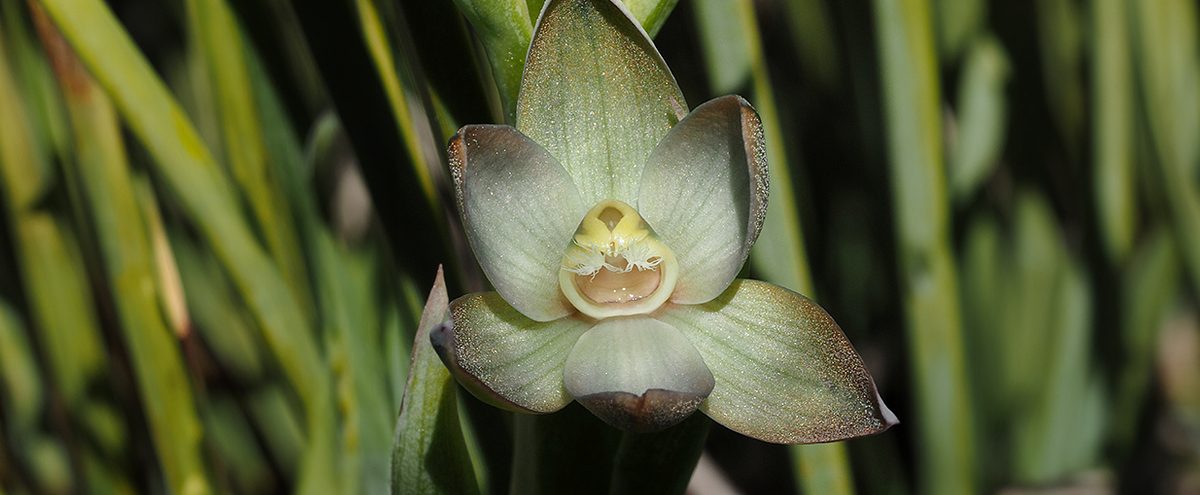
Metallic sun-orchids
The metallic sun-orchid (Thelymitra epipactoides) is listed as nationally endangered with just 500 known plants left in the Murraylands and Riverland region. Landscape board ecologists are working with the community to conserve the remaining metallic sun-orchids through monitoring and by supporting landholders with known clusters.
What is a metallic sun orchid?
The largest of the sun orchid family, the metallic sun-orchid historically spread across the southern end of the Eyre Peninsula, through the South Australian Mallee and South East and into the southern coastal zone of Victoria. It has long and fleshy leaves that are lance-shaped at the tip and tube-like at the base. Each flower spike produces between 5-25 flowers with a characteristic dusky palette of colours ranging from bronze, blue, orange, pink, yellow and grey and always becoming darker towards the petal tips.

Metallic sun orchids flower between September and November, lasting for up to 4 weeks. Seeds are released in December and the plant becomes dormant until February. Metallic sun-orchids are pollinated by native bees.
In the Murraylands and Riverland region, metallic sun-orchid populations are found near Tailem bend, Meningie, the Coorong and Narrung Peninsula. They are found in open woodlands or mallee habitats and prefer open sites with sandy soils and reliable rainfall.
Why are metallic sun-orchids under threat?
Metallic sun-orchids are under threat from a range of factors including grazing by overabundant native animals (such as kangaroos), livestock and introduced pests. Populations can be easily smothered by weeds such as bridal creeper, freesia and perennial veldt grass.
This species of orchid also relies on the presence of a specific fungi in the soil to grow, and native bees to pollinate. These conditions make it difficult to propagate them artificially.
As with many native orchids, they are also at risk from illegal plant collection and flower picking.

What is being done to protect metallic sun-orchids?
Landscape board ecologists are working with landholders to monitor known communities. This work includes regular surveys and undertaking pest control work and fencing for additional protection. Some private properties with metallic sun-orchid populations have been protected under a Heritage Agreement so the ecosystem is conserved in perpetuity.
What should I do if I see a metallic sun orchid?
If you’re lucky enough to spot a metallic sun orchid, the most important thing to remember is to not touch or remove it. Take a photo and be discreet about its location to protect it from illegal collection.
If you suspect you have a population of metallic sun-orchid on your property, contact our Ecologist who will help to formally identify the plant. They can also offer support and advice to help conserve and enhance this endangered species so you can play a vital role in native biodiversity.
This project is supported by the Murraylands and Riverland Landscape Board with funding through the landscape levies.